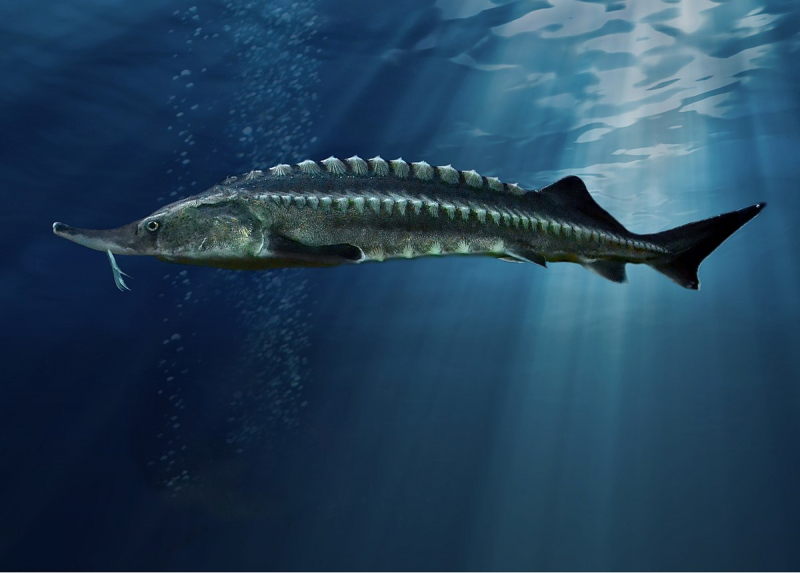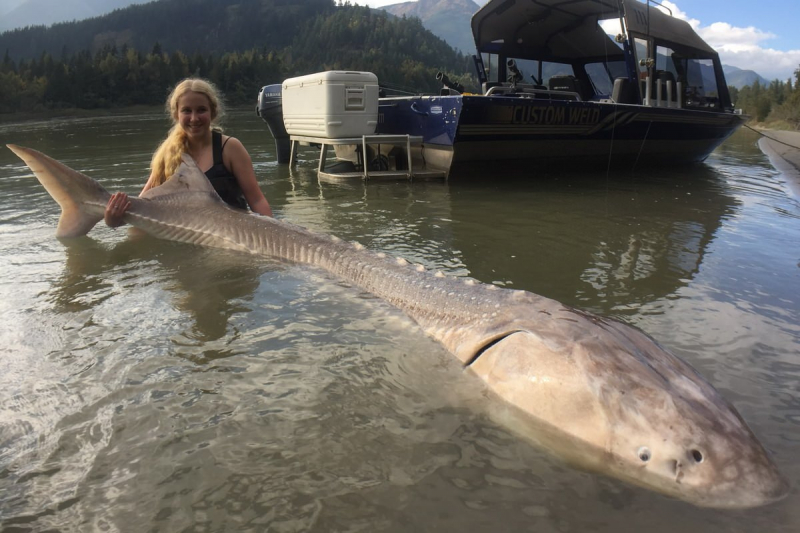Beluga Sturgeon - Maximum mass (tonnes): 1.571
The Beluga Sturgeon, also known as the huge sturgeon (Huso huso), is a species of anadromous fish in the Acipenseriformes suborder of the sturgeon family (Acipenseridae). Primarily, the Caspian and Black Sea basins, as well as the old Adriatic Sea, are home to it. It ranks as the third-most enormous living species of bony fish based on maximum size. Overfishing and poaching have significantly decreased wild populations of belugas, which are heavily fished for the female's highly prized roe, known as beluga caviar.
The beluga sturgeon is the second-longest fish among all extant bony fishes, second only to the ocean sunfish (Mola sp) in terms of size (Regalecus glesne). It is the world's largest freshwater fish. As the largest actively hunting fish, the beluga competes with the great white shark (Carcharodon carcharias) and the Greenland shark (Somniosus microcephalus). The largest recorded female, weighing 1,571 kg (3,463 lb) and standing 7.2 m, was caught in the Volga Estuary in 1827. Another specimen was said to be 6.1 meters long and 1,220 kilograms (2,690 pounds) in weight. Other records for aging sturgeon exceed 5 meters (16 ft 5 inches). Among sturgeons, only the closely related Kaluga (Huso dauricus) can attain a similar size, with a maximum weight of 1,000 kg (2,200 lb).












